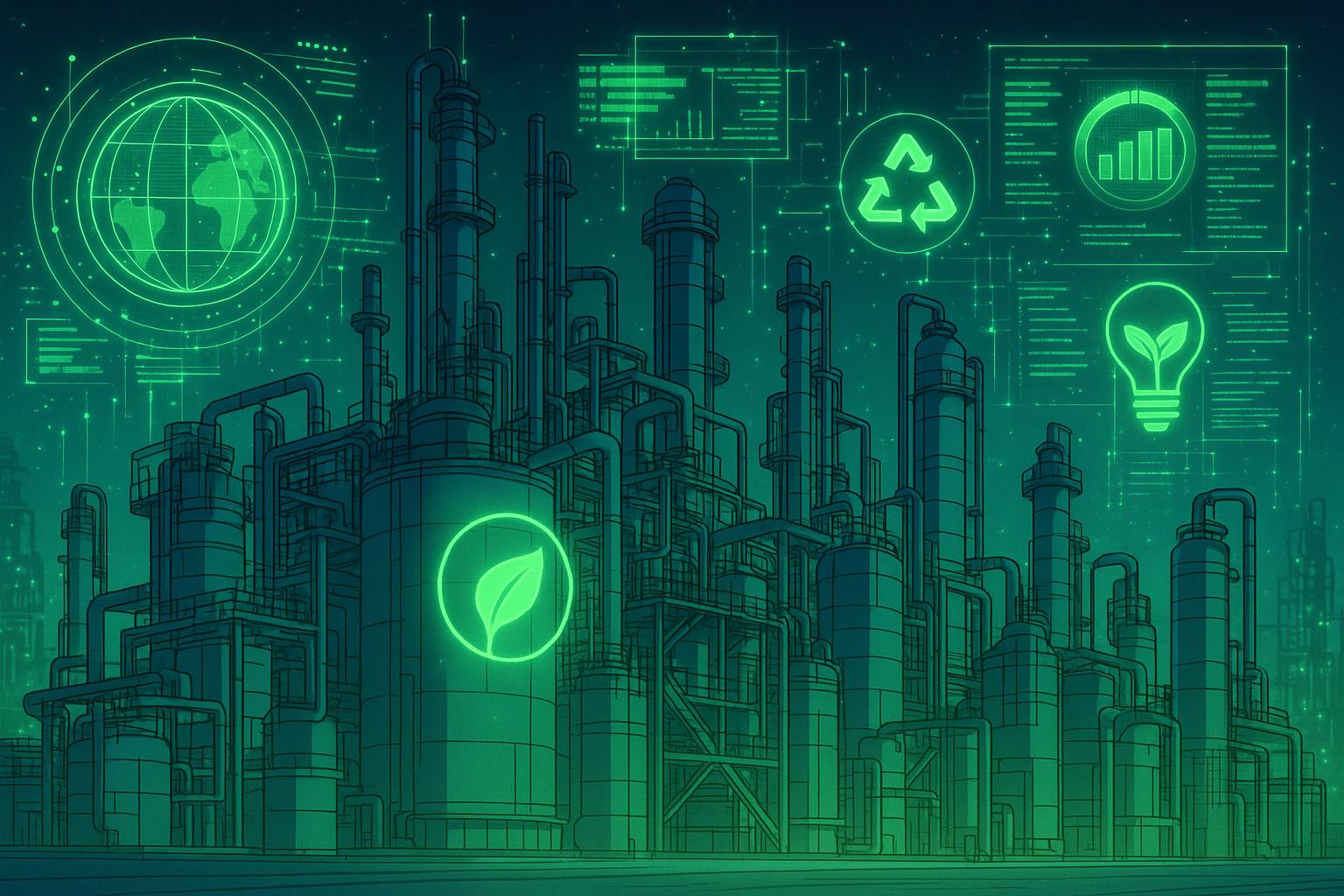Sustainability regulations have emerged as a pivotal concern for the chemicals industry, often seen as a significant hurdle. However, rather than regarding these regulations as mere obstacles, there lies an opportunity for chemical firms to use digital tools as catalysts for innovation and growth. By reframing regulatory requirements, companies can unlock new pathways towards both profit and sustainability, posits Stephen Reynolds.
The chemicals sector is undeniably integral to advancing sustainable practices across numerous industries. It plays a crucial role in developing green energy solutions and creating materials essential for electric vehicles, such as lithium compounds and carbon fibres. Furthermore, the industry's ability to innovate in recycling—especially through chemical process innovations—demonstrates its potential for closing the loop on material usage and promoting a circular economy.
In tandem with these advancements, the landscape of regulatory scrutiny is rapidly evolving. European legislation like the Corporate Sustainability Due Diligence (CSDD) and the Carbon Border Adjustment Mechanism (CBAM) heighten the expectations placed on chemical companies regarding emissions and transparency. Similar trends can be observed in Asia, where governments are increasingly demanding thorough disclosures about toxicity and environmental impacts. In the US, shareholders and health groups push for greater accountability in ecological matters. The interconnectedness of today’s markets means that regulatory developments in one region can have far-reaching implications globally.
Confronted with these realities, industry leaders are starting to view regulations not as burdensome red tape but rather as catalysts for progress. Insights from research suggest that overcoming constraints—whether regulatory or otherwise—can stimulate creativity and innovation. As chemical firms embrace digital transformation, tools such as the Internet of Things (IoT) and artificial intelligence (AI) become pivotal in turning compliance challenges into competitive advantages.
For instance, Aker Carbon Capture exemplifies this approach by aiming to efficiently capture greenhouse gas emissions prior to their release. Through the unification of design and engineering teams across global locations via cloud technologies, Aker has realised substantial efficiencies—reducing errors and cutting project delivery times by 20%. Similarly, Covestro is pioneering sustainable polymers that minimise emissions, affirming its commitment to achieving net-zero scope 1 and 2 emissions by 2035. Its deployment of AI-driven process simulation has enabled the design of innovative production processes that reduce energy consumption by 30% and emissions by 39%, illustrating that regulatory compliance can indeed become intertwined with operational efficiency.
The shift towards digital tools not only facilitates compliance but also aligns regulatory readiness with market differentiation. As firms increasingly harness digital technologies, they optimise operations across the board, empowering them to utilise resources more effectively amid various challenges, including global geopolitical tensions and workforce shortages. Recent surveys underline a strong consensus among industry leaders, illustrating that an overwhelming 89% believe digital innovation is essential for progressing their sustainability agendas.
While the potential for digital tools to drive sustainable reform is clear, they cannot be viewed as a panacea. Adequate investment, talent development, and continuous policy dialogue are fundamental prerequisites for effecting meaningful change. As regulatory frameworks evolve, fostering a proactive discourse around sustainability will be crucial for companies intending to navigate and thrive in tomorrow’s environmentally conscious markets.
As regulatory pressures increase and stakeholder demands intensify, firms that invest wisely in digital infrastructures today will likely emerge as the frontrunners of a sustainable chemical industry tomorrow. In a landscape marked by stringent environmental accountability, waiting for regulatory mandates may prove to be a recipe for obsolescence.
Reference Map:
- Paragraph 1 – [1], [5]
- Paragraph 2 – [1], [3], [2]
- Paragraph 3 – [1], [4], [6]
- Paragraph 4 – [1], [5], [7]
- Paragraph 5 – [1], [6]
Source: Noah Wire Services
